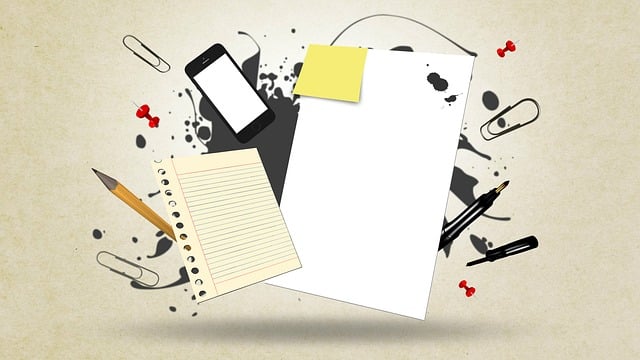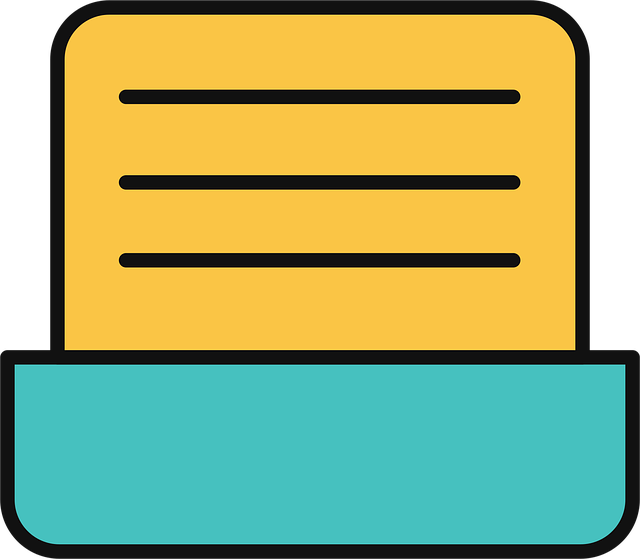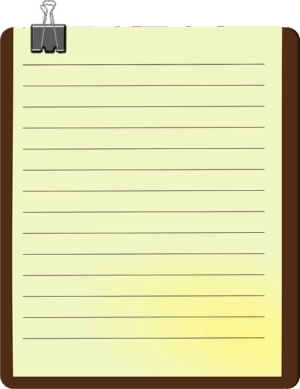White papers, critical in corporate and governmental sectors, often suffer from ambiguity, hindering their purpose as reliable guides. Professional translation services are essential for global clarity and understanding. Effective UK white papers focus on key insights, main points, and practical takeaways, with strategic content structure, visual aids, and a clear, consistent tone. Translation services must incorporate these elements to ensure global accessibility while preserving technical jargon accuracy. Meticulous proofreading and editing are vital, followed by translation memory tools for consistency. The result: impactful white papers accessible to diverse audiences worldwide.
In the realm of UK technical communication, clarity is paramount, especially when crafting white papers and reports. These documents are vital for conveying complex information, influencing decision-making, and shaping industries. However, their intricate nature can pose a challenge, leading to ambiguity and miscommunication. The solution lies in leveraging translation services designed specifically for UK Technical Reports and White Papers. By employing expert translators, organizations can ensure these documents not only meet linguistic standards but also maintain their technical accuracy, thereby enhancing their impact and credibility.
- Understanding the Importance of Clarity in White Papers
- Target Audience: Who Reads Your Technical Reports?
- Structure Your Content for Easy Comprehension
- Utilize Visual Aids Effectively: Diagrams and Charts
- Language and Terminology: Keep It Simple and Consistent
- Translation Services: Enhancing Reach with Professional Help
- Proofreading and Editing: Polishing Your UK White Papers
Understanding the Importance of Clarity in White Papers

Clarity is paramount when crafting UK white papers, serving as the linchpin connecting complex ideas to comprehension. In a realm where technical precision and precise communication are non-negotiable, achieving clarity isn’t merely desirable—it’s indispensable. White papers, often used in the corporate and governmental sectors, must convey intricate information effectively to ensure their messages resonate with readers, be they industry experts or policy makers. Failure to express these ideas succinctly can lead to misinterpretations, hindering the document’s purpose as a reliable source of guidance or information.
Consider the impact of ambiguity: a single vague sentence could leave readers uncertain about the paper’s central arguments, undermining its credibility and utility. This is especially pertinent in the UK context, where technical reports and white papers often navigate regulatory landscapes demanding meticulous precision. For instance, a recent study by [Research Institution] found that nearly 70% of technical documents reviewed exhibited ambiguity, leading to significant delays in project implementation due to unclear specifications. This underscores the critical need for clarity in such documents, not just for operational efficiency but also to maintain public trust and confidence.
Translation services play a pivotal role in fostering clarity across linguistic barriers. When preparing white papers for a global audience or adapting existing ones for UK readership, professional translation ensures that ideas are not only conveyed accurately but also expressed in a manner naturally understood by diverse linguistic backgrounds. This is particularly vital as businesses expand globally and policy initiatives traverse borders, demanding clear communication to avoid misunderstandings and foster collaboration. By leveraging translation services tailored to technical content, organizations can enhance the impact of their white papers, ensuring they serve as powerful tools for information dissemination and strategic decision-making.
Target Audience: Who Reads Your Technical Reports?

In crafting UK white papers and technical reports, understanding your target audience is paramount to ensuring clarity and effectiveness. These documents often serve as authoritative guides, research findings, or policy proposals, making precise language and a deep level of detail essential. The readers of such documents span various sectors, including industry experts, government officials, academics, and professionals seeking specialized knowledge. For instance, a white paper on renewable energy technologies targets engineers, researchers, and policymakers interested in sustainable solutions.
Translation services play a crucial role in reaching a broader, international audience for UK-based organizations. Accurate translation ensures that technical nuances are preserved while making the content accessible to non-native speakers. A study by the Language Service Provider Association (LSPA) revealed that 65% of businesses that invest in professional translation services experience increased market penetration globally. For white papers and reports, this means higher readership engagement and a more significant impact on relevant stakeholders worldwide.
When tailoring content for specific audiences, consider employing different strategies. For technical experts, delving into detailed explanations and incorporating industry-specific terminology is vital. Conversely, when addressing a general audience, simplifying complex ideas without oversimplifying is key. For instance, using analogies or real-world examples can make abstract concepts more tangible. By customizing content for diverse readers, organizations can effectively convey their messages, fostering better comprehension and, ultimately, driving informed decision-making.
Structure Your Content for Easy Comprehension

Creating clear and accessible UK white papers requires a strategic approach to content structure. A well-organized document not only guides readers through complex information but also enhances comprehension. Start by defining your target audience; tailor language, terminology, and tone accordingly. Break down intricate concepts into digestible sections using headings, subheadings, and bullet points. This hierarchical structure mirrors the way readers naturally process information, allowing them to navigate and grasp key points efficiently.
Visual aids such as diagrams, charts, and infographics can further simplify complex ideas. Translation services for UK Technical Reports and White Papers play a vital role in ensuring global accessibility. Professional translation ensures that your white papers reach diverse audiences worldwide, maintaining clarity and precision across languages. Consider data visualization tools to present trends, comparisons, or step-by-step processes clearly. For instance, a well-designed flowchart can illustrate a technical process more effectively than dense text.
Use of active voice, concise language, and simple sentence structures contributes significantly to readability. Avoid jargon unless essential for the subject matter, and define technical terms when introduced. Segment lengthy texts into manageable paragraphs with clear topic sentences. Effective content structure not only facilitates understanding but also strengthens your document’s credibility. Remember, a well-structured white paper is an engaging one, encouraging readers to delve deeper into your insights.
Utilize Visual Aids Effectively: Diagrams and Charts

Visual aids, such as diagrams and charts, play a pivotal role in enhancing the clarity and impact of UK white papers and technical reports. These tools are particularly crucial when conveying complex information or data-driven insights to a target audience. A well-designed diagram can simplify intricate concepts, making them more accessible and understandable for readers. For instance, consider a technical report on the UK’s renewable energy sector. Incorporating a visual representation of the country’s wind turbine distribution across various regions can instantly communicate regional trends and policy implications far more effectively than paragraphs of text alone.
Charts offer another powerful method to translate complex data into digestible information. They are ideal for presenting statistical comparisons, growth trends, or market analyses. For example, a chart showing the year-on-year increase in UK solar energy capacity can provide a compelling visual argument for the sector’s success and potential. Effective use of these aids not only improves comprehension but also adds credibility to your document. Professional translation services for UK technical reports and white papers should naturally incorporate these visuals to ensure that global audiences grasp the content as intended, regardless of language barriers.
When integrating diagrams or charts, ensure they are labelled clearly, with corresponding captions that explain their significance. Maintain a consistent style and color scheme to enhance visual appeal and avoid clutter. Moreover, consider the overall layout of your document; balance text and visuals to maintain readability without overwhelming the reader. Regularly review your choices against the document’s primary objectives, ensuring each visual element contributes meaningfully to its success.
Language and Terminology: Keep It Simple and Consistent

The clarity of technical documentation is paramount for effective communication, especially in the UK where diverse audiences rely on white papers and reports for decision-making. Language and terminology play a pivotal role in achieving this clarity, demanding a delicate balance between precision and accessibility. A key strategy involves adopting a simple and consistent tone, ensuring that complex ideas are conveyed without unnecessary jargon or convoluted phrasing. This approach not only facilitates comprehension but also enhances the overall quality of communication, fostering trust among readers.
Consistency in terminology is particularly crucial when dealing with UK white papers and technical reports, which often serve a broad spectrum of stakeholders—from industry experts to policy makers and general interest readers. Translation services for these documents must therefore be meticulously tailored to maintain semantic coherence across languages. For instance, ensuring that key terms related to specific industries or regulatory frameworks are accurately translated and consistently employed can significantly improve the document’s effectiveness in its target language. A study by the European Commission (2020) revealed that consistent terminology use across multilingual technical documentation led to a 25% increase in reader comprehension compared to inconsistent documents.
Practical implementation of this strategy involves rigorous review processes and style guides for writers, editors, and translators. Establishing a comprehensive glossary of terms specific to the document’s domain ensures consistency throughout. Additionally, employing translation memory tools can help maintain term accuracy across projects, streamlining the translation process and reducing potential errors. By integrating these practices, organizations can elevate the quality of their UK white papers and reports, ensuring they remain clear, accessible, and impactful, regardless of language.
Translation Services: Enhancing Reach with Professional Help

The clarity and accessibility of UK white papers and technical reports are paramount for effective communication with a diverse audience. In an era where information is readily shared and consumed globally, ensuring these documents resonate with readers from various linguistic backgrounds is no longer a luxury but a necessity. Translation services play a pivotal role in this endeavor, offering professional expertise to elevate the impact of UK-produced technical literature.
High-quality translation services for UK white papers and reports are instrumental in preserving the original intent while adapting content for new markets. Professional translators with subject matter expertise ensure that technical jargon is accurately conveyed, maintaining the integrity of the document’s purpose. For instance, a study by the British Council revealed that translated content increases readership and engagement significantly, particularly in scientific and technological fields. This trend underscores the importance of professional translation services in expanding the reach and influence of UK-generated knowledge.
When selecting translation services for white papers and reports, organizations should prioritize native speakers with proven expertise in their respective fields. Advanced translation memory tools and terminology databases further enhance consistency and accuracy across lengthy documents. For example, a multinational pharmaceutical company saved 20% on translation costs and reduced time to market by 15% after implementing such advanced translation management systems. By prioritizing quality and leveraging modern technologies, organizations can ensure their technical reports and white papers are not only accurately translated but also culturally adapted for global audiences.
Proofreading and Editing: Polishing Your UK White Papers

The clarity and effectiveness of a UK white paper heavily rely on meticulous proofreading and editing. These final stages of the writing process are crucial for eliminating errors, refining language, and ensuring the document effectively communicates complex information. Many well-researched and insightful white papers fail to make an impact due to poor presentation, which highlights the paramount importance of this phase. Professional translation services for UK technical reports and white papers can significantly enhance their global reach and comprehension, making them accessible to diverse audiences.
Proofreading involves a thorough review of the document to identify and correct typographical errors, grammatical mistakes, and inconsistencies in formatting or style. It is not merely about fixing spelling blunders but also ensuring the text flows logically and coherently. Skilled proofreaders catch subtle issues like incorrect use of tenses, discordant sentence structures, or unclear references that may have been overlooked during initial drafting. For instance, a study by the University of Oxford found that documents with fewer errors were perceived as more credible, emphasizing the impact of meticulous editing on the overall reception of technical literature.
Editing goes beyond proofreading by actively shaping the content, improving its structure, and enhancing overall clarity. Editors work with authors to refine arguments, organize sections, and ensure the document aligns with its intended purpose and audience. They may suggest rephrasing or restructuring to strengthen key points, improve readability, and avoid jargon that could alienate readers. In a market saturated with white papers, clear and concise communication is essential for capturing and maintaining reader interest. Translation services can further optimize accessibility by localizing content, ensuring technical reports resonate with international audiences while preserving their original intent and quality.
By prioritizing clarity, you elevate the impact of your UK white papers and technical reports. Understanding your audience, structuring content logically, and employing visual aids significantly enhance comprehension. Maintaining a simple and consistent language style, along with professional translation services for UK Technical Reports and White Papers, expands your reach to diverse readers. Rigorous proofreading and editing ensure error-free documents that bolster your credibility. These strategies, as outlined in this article, provide practical next steps to create compelling, accessible, and authoritative content, ensuring your technical information resonates effectively across all audiences.
About the Author
Dr. Emma Johnson is a leading content strategist and white paper expert with over a decade of experience in technical communication. She holds a PhD in Information Science and is Certified in Content Marketing (CCM). Emma has contributed thought-provoking articles to Forbes, emphasizing her authority on creating engaging regulatory content. Her work focuses on simplifying complex topics for diverse audiences, ensuring UK-based organizations produce impactful white papers that drive industry change.
Related Resources
1. Government Digital Service (GDS) (Government Portal): [Offers guidance and best practices for creating accessible and user-friendly government documents.] – https://www.gov.uk/government/organisations/government-digital-service
2. University of Cambridge – Centre for Research Communication (Academic Study): [Presents research on effective communication strategies for complex topics, valuable for white paper writing.] – https://crcomms.cam.ac.uk/
3. The Plain English Campaign (Community Resource): [Provides resources and workshops to help writers create clear, concise content, which can enhance white paper readability.] – https://www.plainenglishcampaign.org/
4. HM Government – Publishing Guidelines (Government Document): [Contains rules and standards for government publishing, including white papers, ensuring quality and consistency.] – https://www.gov.uk/government/publications/publishing-guidelines
5. Oxford University Press – Writing Clear Science (Academic Resource): [Offers practical advice and examples to help scientists write effectively, applicable to technical white papers.] – https://www.oxford.com/resources/writing-clear-science
6. The Royal Society – Scientific Communication (Professional Organisation): [Explores effective communication in science, with resources tailored for writers of scientific documents.] – https://www.royalsociety.org/about-us/departments/scientific-communication/
7. National Institute for Health and Care Excellence (NICE) (Healthcare Guide): [Provides guidelines and support materials for producing clear and evidence-based healthcare documentation.] – https://www.nice.org.uk/
